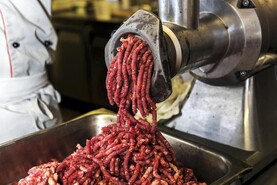The European Union’s population is expected to be eating less meat in 10 years’ time than it is now, as beef and pork consumption falls.
The European Commission predicted that consumers will be eating around 8% less beef and 4% less pork by 2032 in its medium-term outlook for agriculture, published last week.
Over this time, global demand will increase substantially as the entirety of the EU’s current meat production is to be needed to fill demand created by a rising population and higher incomes, according to the outlook for 2022-2032.
The changes to demand at EU-level will be driven by consumer choices relating to sustainability, health considerations and convenience.
Commission analyst Benjamin van Doorslaer told the EU agricultural outlook conference on Friday that Europe is “a little bit strange” as per capita demand for meat is rising in all other regions, including developed countries like the US.
The analyst stated that changing consumer preferences will result from a better perception in sustainability terms for alternative protein sources and this will dampen the demand for meat.
A falling population is expected to further lower the volumes of meat needed to keep the EU fed, while aging populations in member states will lead to meat portion sizes shrinking.
Chicken is the only meat for which the EU expects to see a higher consumer appetite.
“The consumer finds it easier [to cook] than for other meats and as well, price plays a role. It is one of the cheapest meats,” van Doorslaer said.
“In pigmeat, we see clearly a steady decline in consumption and a similar pattern for beef. On the other hand, poultry is taking over a part of the consumption of red meat.
“Sheep and goat ?[meat] has already gone down and is at such a low level that we don’t expect it to go even further down.”
Changes
There is growing interest in meat alternatives, but EU consumers are eating less than 300g per year of these proteins, OECD policy analyst Clara Frezal told the conference.
Meat alternatives are expected to amount to a “very small” share of protein markets, limited by the cost, lack of consumer acceptability and regulatory requirements of these products.
Changes to Europe’s religious make-up will have implications for the consumption of different types of meat.
The Commission official commented that there are “religious disadvantages” with pork, but that these drawbacks are not seen with chicken.
Religious change is expected to have a positive impact on the demand for sheep, a meat that was said to be “very much related to religious festivities” which should cushion the meat from a fall in demand.
However, as sheep and goat consumption have fallen over the past few decades, overall volumes demanded in the EU will remain far smaller than those of the other meats.






 This is a subscriber-only article
This is a subscriber-only article











SHARING OPTIONS: